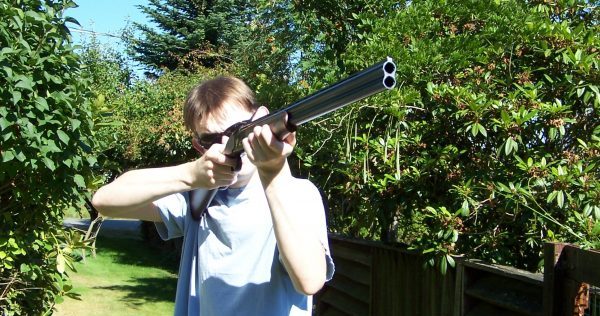
By Dave Workman
Editor-in-Chief
Mourning dove hunting seasons open across the map on Friday, Sept. 1 and the most important question for winghsooters is, “Are you ready?”
Put another way, do you have boxes and boxes of shotgun shells?
Dove hunters will acknowledge the dove to be a challenging target capable of flight patterns that can confuse and frustrate many shotgunners. I’ve known people over the years who claimed to be lucky if they put for our five birds in the bag for every box of shells they emptied. Others have been uncannily lucky (they’ll smugly call it “skilled”) at decking doves, but nobody has ever claimed hunting these migratory marvels is boring.
There was a fairly detailed report on dove hunting posted online a few years ago by the Sportsman’s Connection, which advised hunters “Doves are faster than you might think.” A dove hunter’s response to such a statement would be, “Ya don’t say!”
According to the SC article, “Mourning doves are swift fliers and regularly cruise at about 30 mph, but can reach speeds of more than 60 mph. This, in addition to their twisting and turning while in flight, makes them difficult targets for dove hunters.”
Experienced dove hunters opt for smaller loads; that is, shot sizes in No. 7 ½ or No. 8 are the typical choice for a couple of reasons. They deliver a wide pattern and on a solid hit, that size of pellet is not going to simply turn the bird into a mess.
For example, Remington offers a “Heavy” dove load for 12-gauge shotguns with 1 1/8-ounce payload of No. 7 ½ shot leaving the muzzle at 1,255 fps. In 20-gauge, the “Heavy” load consists of 1 ounce of No. 7 ½ checks out at 1,165 fps. Doves are fast, but not that fast.
Winchester and Federal also offer dove loads, and you will definitely want to stock up if more than one trek to the dove fields is on your horizon.
What about the choke? This may be where the double-barrel shotgun has a slight advantage because one barrel may be fitted with a Modified choke tube and the other with an Improved Cylinder tube, and the smart preference would be to use the I/C in your first barrel and the Modified for going-away shots because you will want a slightly tighter pattern to spread at a longer distance.
If you’re a single-barrel shooter, the smart money will be on the I/C choke, which can allow hunters to connect at distances greater than 20-25 yards, which a dove can cross in what seems like a heartbeat.
An article at The Outdoor Wire recently reminded dove hunters to take along a good cooler because in late summer/early autumn, temperatures will still be warm and birds could spoil without being stuck in a cooler. Make sure there’s plenty of ice and take along some plastic bags into which the birds can be placed before they go into the cooler. You can also keep water cold because dove hunting can be a thirsty affair, depending upon the temperature.
Doves require food, water and roosting trees, and sometimes power lines. Mornings and evenings provide decent hunting, but I’ve known of people hunting through the day in promising areas. Recently harvested grain (i.e. wheat, oats, barley) fields where flocks of doves might find loose grain deserve attention. If you can identify a roosting tree, you should find doves.
You’ve still got one weekend for practicing your wingshooting, so make the most of it. While busting clay disks is good practice, it cannot simulate the wild flight patterns of mourning doves. However, it is still good practice to refresh your skills and that’s no small consideration.
Be sure to check the regulations for hunting hours and bag limits in your state.



